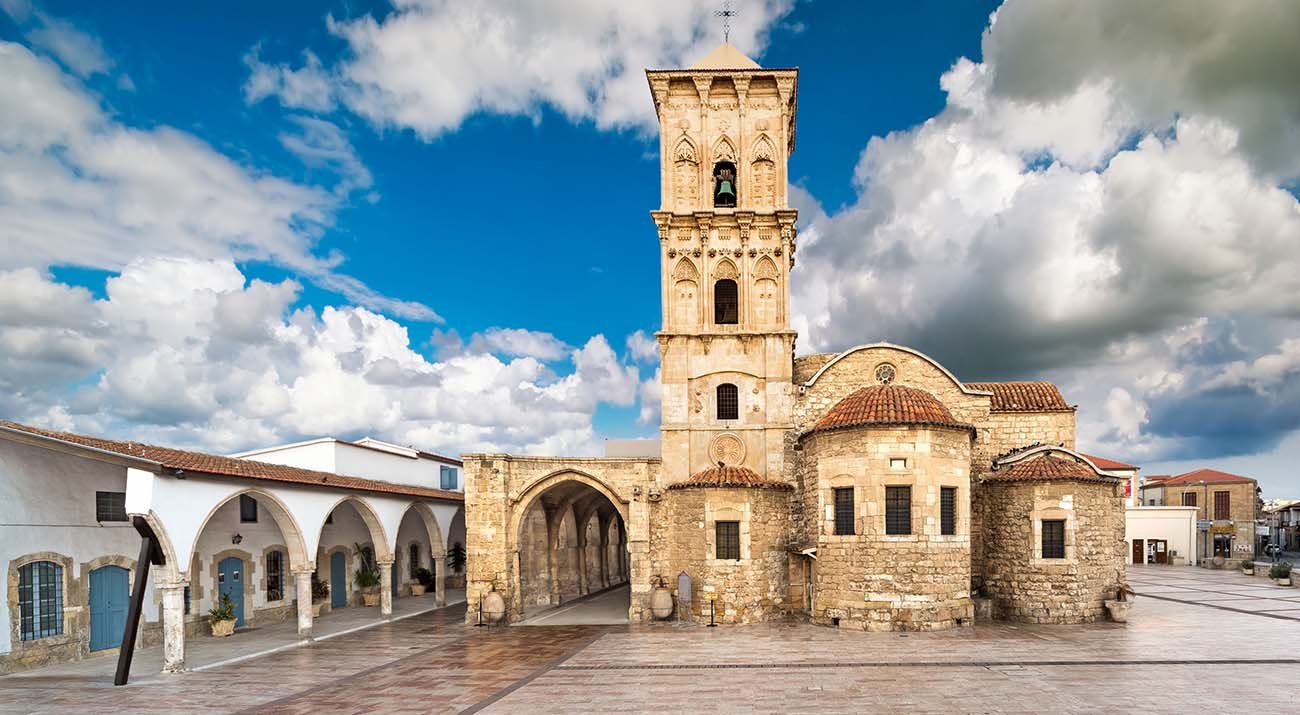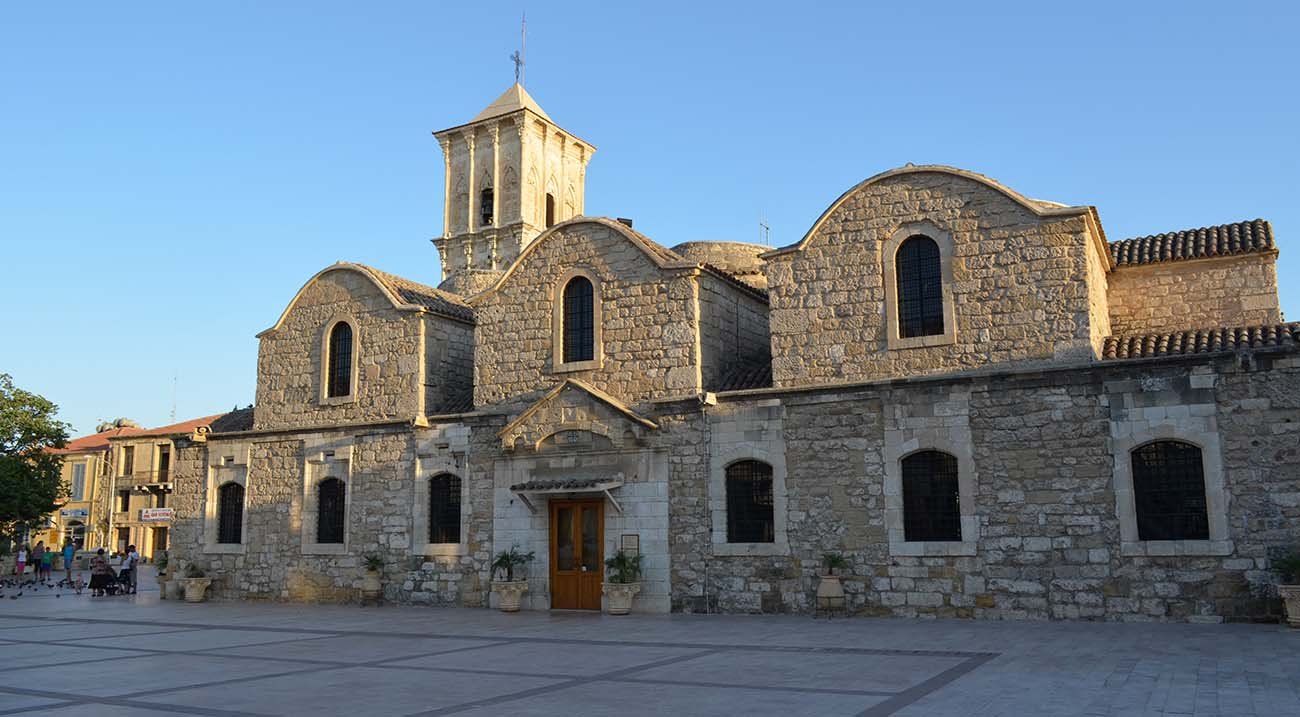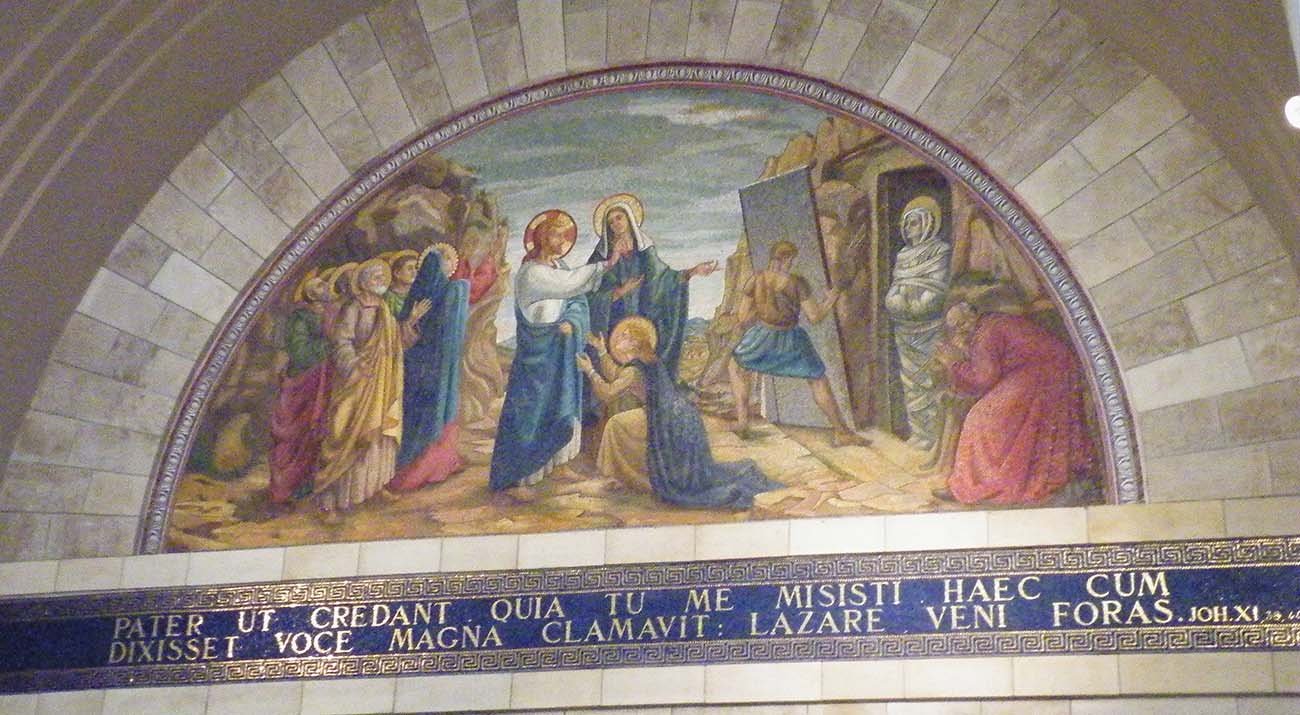
The Church of St. Lazarus, the friend of Christ and the first Bishop of Kition, Cyprus is in Larnaca city. Kition was the name of Larnaca earlier. St. Lazarus Church was built on the sepulchre of the Saint, the first Bishop of Kition. He lived 30 more years here, and was buried for the second and last time. Leo VI, Emperor of Byzantium, erected the magnificent church in Byzantine style some 1,125 years ago. Virgin Mary came to Cyprus, to visit St. Lazarus. She arrived at Kition where She met Lazarus, to whom She presented a bishop's pallium, woven by Her own hands. Having blessed the local Church of Kition, She returned to the Holy Land. Many illnesses were healed and other miracles were performed here owing to the Saint's grace. A spring exists here and its water is considered holy with the power of healing.
- In 890, a tomb was found in Larnaca bearing the inscription "Lazarus the friend of Christ". Emperor Leo VI of Byzantium had Lazarus' remains transferred to Constantinople in 898. In recompense to Larnaca, Emperor Leo had the Church of St. Lazarus, which still exists today, erected over Lazarus' tomb. The marble sarcophagus can be seen inside the church under the Holy of Holies. VIP Tours conducts an excursion to this site as a religious tour.
- The Church of St. Lazarus in Larnaca has been known to the Christian world since the old times; until the early years of this century it was considered an indispensable supplement to the pilgrimage of the Holy Land. This is another reason why VIP Tours calls this site religious.
- After the sacking of Constantinople by the Franks during the Fourth Crusade in 1204, the Crusaders carried the saint's relics to Marseilles, France as part of the booty of war. They disappeared from there, and up to the present day, have not been traced.
- Its importance as a great pilgrimage has been strengthened after the discovery of part of the sacred relics of the Saint in a marble sarcophagus under the altar on 02 November 1972, during renovation of the Church. All tours in Cyprus come here.
- The friendship of St. Lazarus with Jesus Christ is commemorated as ‘The Feast of St. Lazarus’ and always held on the Saturday before Palm Sunday during Easter week.
- Lazarus was compelled to seek refuge in Kition, Cyprus, to avoid the anger of the high priests and the Pharisees, who wanted to kill him. (John 12:10,11).
- According to tradition, Lazarus never smiled during the thirty years after his resurrection, worried by the sight of unredeemed souls he had seen during his four-day stay in Hades, with possibly one exception when he saw someone stealing a pot.
- Lazarus left his country like many Christians of Judea, who had dispersed to Phoenicia, Cyprus and Antioch..." (Acts 11:19). The Apostles Paul and Barnabas accompanied him and, according to tradition, ordained him as the first Bishop of Kition. That's why all the episcopal thrones in the churches of Larnaca bear the icon of St. Lazarus instead of that of Christ, as that is the custom in the Orthodox Church. This is one Church in Cyprus that must be seen.
- St. Lazarus Church is one of the most beautiful and oldest churches in Cyprus.
- Unfortunately, a great storm carried Virgin Mary’s ship to the Aegean Sea in Greece. From there, our Lady, after converting idolaters into Christianity and seeking Her Son's blessings and protection for all, who, in the future, were to "fight the good fight of faith", came to Cyprus. Her visit left behind many places to see during tours in Cyprus.
- A few days prior to Easter week, Christ was going to Jerusalem, to Lazarus’ house, to give Himself up as a sacrifice ‘for the life of the world’ (John 6:51). According to St. John the Evangelist, "Jesus loved Martha and her sister, and Lazarus." This last visit to Lazarus home was not a routine visit. He was coming to heal a sick Lazarus but arrived four days after Lazarus' burial. Jesus "groaned in the spirit" and "wept"; then He stood before the tomb and - being the master of life and death - He restored Lazarus to life, despite the fact that "he had been dead four days" and was already stinking (John 11:1-44).
Private car with driver for 3 hours
120 euro
Additional hour
25 euro
Cost based on 2-4 Person
Private minibus with driver for 3 hours
220 euro
Additional hour
35 euro
Cost based on 5-8 Person





